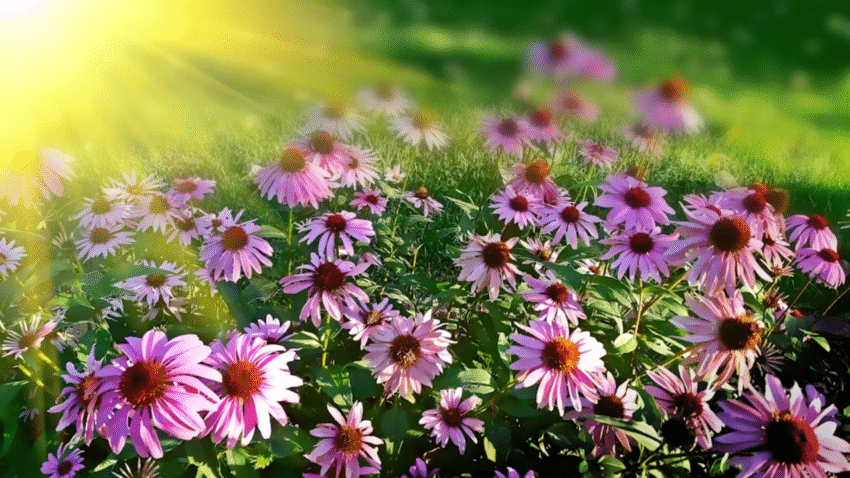Introduction
Wondering how to keep your garden soil fertile and weed-free without relying on chemicals? Learning how to use cover crops in your garden is one of the best natural solutions. In this complete step-by-step guide, you’ll discover what cover crops are, why they matter, exactly how to plant and manage them, common mistakes to avoid, and bonus tips to get the most from this eco-friendly gardening method.
Why Cover Crops Matter in the Garden
Cover crops—also known as green manure—are plants grown primarily to benefit the soil, rather than for harvest. Popular choices include clover, rye, vetch, buckwheat, and legumes like peas or beans. These plants offer multiple benefits: they prevent soil erosion, add organic matter, fix nitrogen, suppress weeds, and improve soil structure.
When you leave your soil bare, it’s vulnerable to erosion by wind and rain, nutrient loss, and weed infestations. A cover crop acts like a living blanket, protecting your garden beds and feeding the soil. Many cover crops, especially legumes, form a symbiotic relationship with nitrogen-fixing bacteria, naturally adding valuable nutrients back into your soil. This means fewer synthetic fertilizers and healthier, more productive garden beds over time.
Step-by-Step Guide to Using Cover Crops
1. Choose the Right Cover Crop
Select your cover crop based on your climate, soil type, and gardening goals.
- Legumes (e.g., clover, field peas, vetch): Great for fixing nitrogen.
- Grains (e.g., winter rye, oats, barley): Excellent for adding organic matter and preventing erosion.
- Buckwheat: Fast-growing, good for smothering weeds during warm seasons.
Tip: Local garden centers or extension services can help you pick the best cover crop for your region.
2. Time It Right
Timing is crucial. Most cover crops are planted in the off-season—like late summer or early fall—to protect beds over winter. Others, like buckwheat, can be grown in summer between spring and fall crops.
- Fall planting: Winter rye or clover work well.
- Spring planting: Field peas or oats.
- Summer planting: Buckwheat grows quickly and suppresses weeds.
3. Prepare the Bed
Before sowing, clear away debris and weeds. Loosen the top few inches of soil with a rake or hoe to ensure good seed-to-soil contact.
Tip: Lightly water the soil if it’s dry to help seeds germinate faster.
4. Sow the Seeds
Broadcast seeds evenly over the prepared soil. Lightly rake them in so they’re covered by about ¼ to ½ inch of soil. Gently water to settle the seeds.
Tip: Don’t sow too thickly—crowding can lead to poor growth.
5. Care for Your Cover Crops
Once your cover crop is growing, water as needed—usually less than food crops since many cover crops are hardy. Avoid letting them flower and set seed, as this can lead to unwanted volunteers later.
6. Cut Down and Incorporate
When your cover crop reaches maturity but before it sets seed, cut it down using garden shears, a mower, or a scythe. Let the cut plants dry for a few days, then work the organic matter into the top 6 inches of soil with a hoe or garden fork. Wait at least 2–3 weeks before planting food crops to allow the green matter to decompose and release nutrients.
Common Mistakes to Avoid
Mistake 1: Letting Cover Crops Go to Seed
Solution: Always cut them down before flowering to prevent them from reseeding and becoming weeds.
Mistake 2: Using the Wrong Crop for the Season
Solution: Choose cover crops suited to your region’s climate and planting time. For example, winter rye is hardy and survives cold temperatures, while buckwheat won’t tolerate frost.
Mistake 3: Not Incorporating Cover Crops Properly
Solution: Chop and incorporate cover crops into the soil while they’re still green and tender. This helps them break down quickly, releasing nutrients.
Mistake 4: Not Allowing Enough Decomposition Time
Solution: Wait at least 2–3 weeks after incorporating cover crops before planting. This prevents issues with nitrogen tie-up that can starve your seedlings.
Mistake 5: Forgetting Crop Rotation
Solution: Rotate where you grow cover crops, too. Don’t plant the same type in the same spot every year to avoid pest and disease buildup.
Extra Tips & Garden Hacks
✅ Try a Mix: Many gardeners use a blend of grains and legumes for maximum benefits—like a mix of rye and clover. This gives you both nitrogen fixing and lots of organic matter.
✅ Use Cover Crops for Weed Control: Cover crops are a natural mulch. Densely planted buckwheat, for example, can outcompete weeds during a summer gap.
✅ Plan Ahead: Keep a garden journal to track which cover crops work best in your beds. This makes future rotations easier and more effective.
✅ Related Read: Check out our guide on how to rotate crops for better soil health—a perfect companion strategy to using cover crops.
Conclusion
Cover crops are a simple yet powerful tool for any gardener who wants to build healthier soil, suppress weeds, and boost sustainability. By choosing the right cover crop for your climate, timing it well, and managing it correctly, you’ll be rewarded with rich, fertile beds ready for your vegetables and flowers to thrive.
Remember: healthy soil equals healthy plants. So give your garden the green boost it deserves—bookmark this guide on how to use cover crops in your garden and watch your soil come alive season after season!
